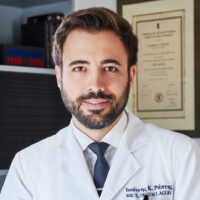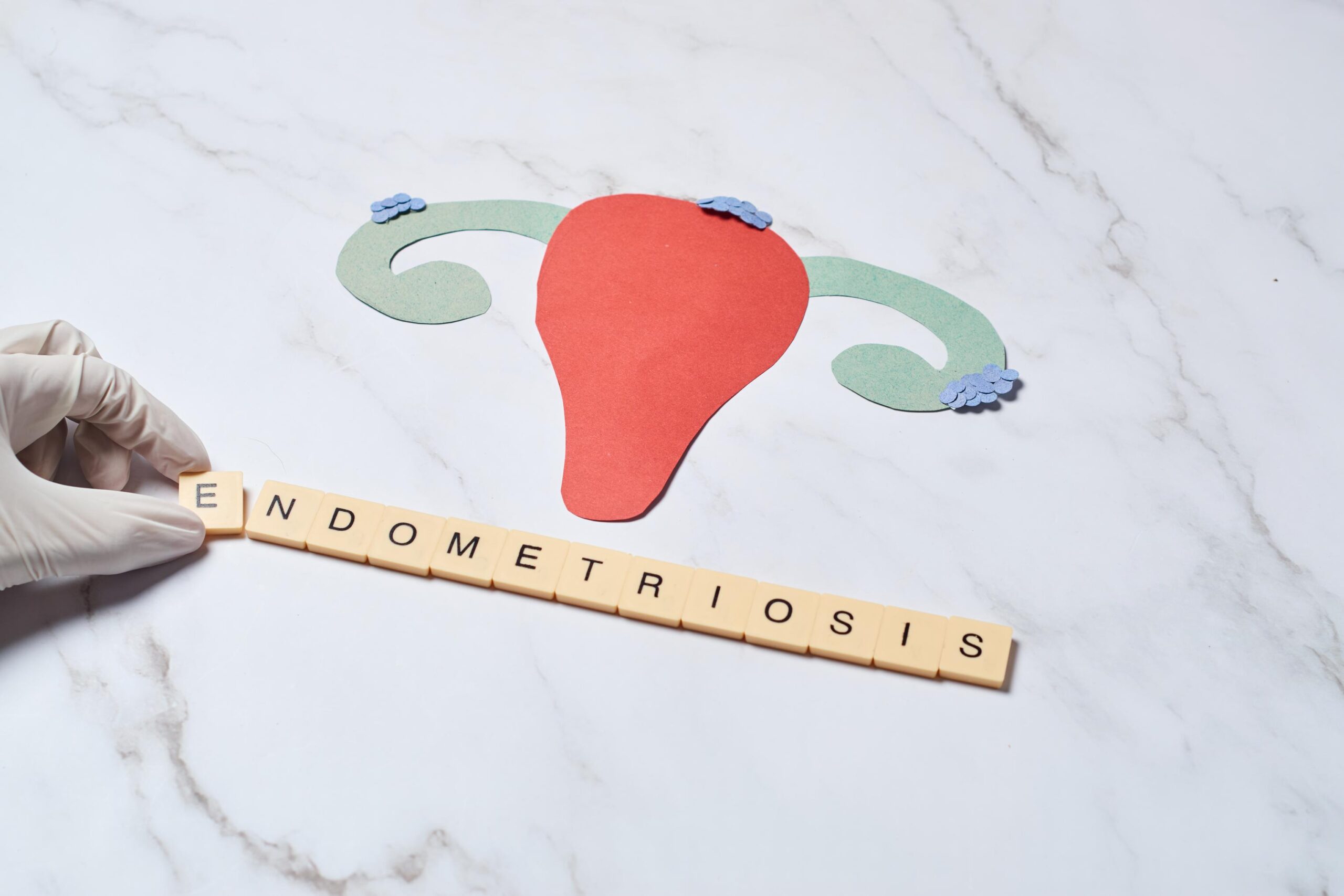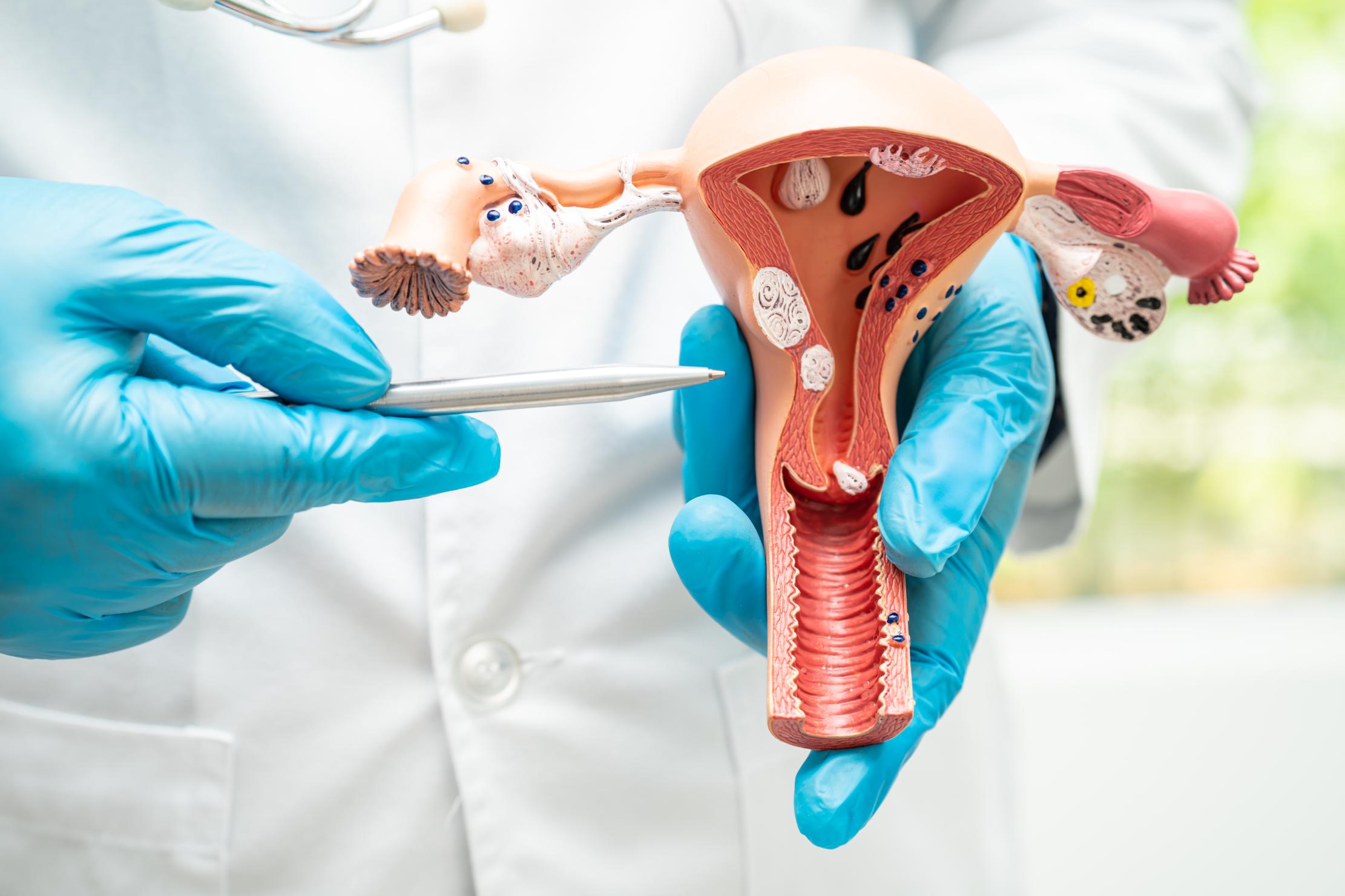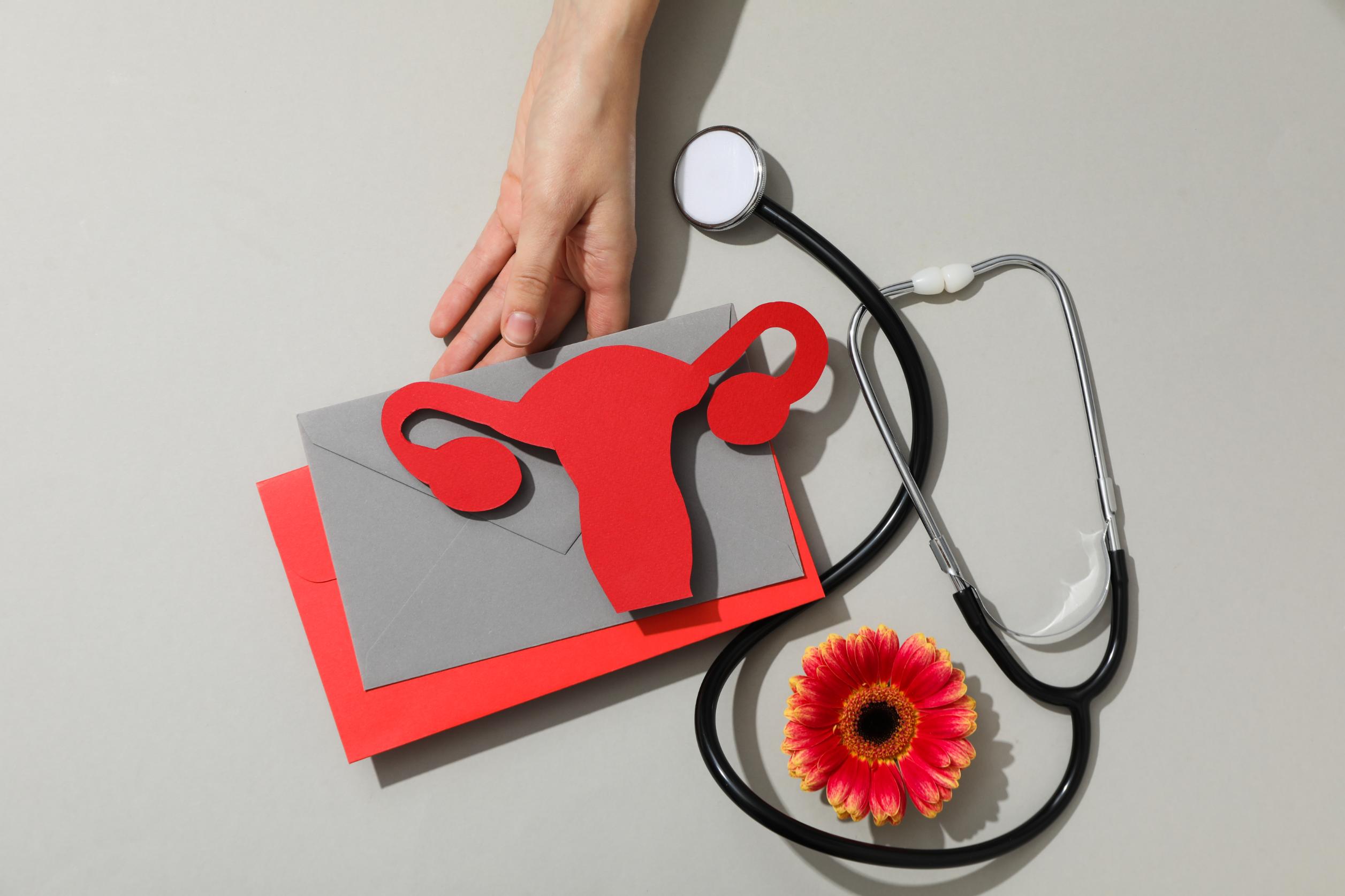
Ioannis Raptis is a certified doctor (MIC II title) for performing high-level difficulty laparoscopic and hysteroscopic surgeries by the German Society of Gynecological Endoscopy (AGE). Most of the patients are provided with the possibility of outpatient surgeries. Doctor’s biography >
What are ovarian cysts?
Ovarian cysts are called some cavities that develop inside the ovaries. These cavities can vary in size and may contain thin fluid, mucus, blood, or tissues depending on their type. They are categorized into two groups: functional and non-functional.
The first category includes benign cystic formations, which often resolve on their own within a few days or weeks, do not require any treatment, and do not pose any risk to the health or fertility of a patient (e.g. cyst of unsuccessful ovulation, corpus luteum cyst, etc.). The second category comprises complex cysts with thick walls that do not resolve on their own, may impact the health or fertility of a patient, and in rare cases, they may increase the risk of malignancy development in the future (e.g. endometrioma, dermoid cyst, cystadenomas, etc.).
Ovarian cysts are a common gynecological finding. Most women develop functional cysts at some point in their lives, often without realizing it.


What symptoms do ovarian cysts cause?
The most common symptoms, which are associated with the presence of ovarian cysts are the following ones:
- Lower abdominal pain
- Abdominal pain during exercise, sexual intercourse, or bowel movements
- Frequent urge to urinate
- Nausea
- Abdominal bloating
- Menstrual irregularities
When is laparoscopic treatment for ovarian cysts recommended?
It is important to know that there is no pharmaceutical treatment for ovarian cysts. The use of birth control pills or antibiotics to address this issue lacks any scientific basis, and any remission of cystic formations that is observed in these cases is entirely coincidental.
Surgical treatment is necessary in cases of non-functional cysts, intense symptoms or significant increase in size and in the vast majority of cases it must be endoscopic. In other words it must be laparoscopic.
Laparoscopic treatment requires the total anesthesia of a patient. During the operation, the specialized surgeon creates microscopic holes in the patient’s abdomen, through which an endoscopic camera and special microsurgical tools pass. In this way, he manages to operate on the cysts under maximum magnification. This ensures maximum precision as they are removed, without damaging healthy parts of the ovary and therefore without burdening a patient’s fertility. At the same time, the possibility of postoperative complications is minimized, while the aesthetic result is excellent.


What tests are necessary to be done before laparoscopic removal of ovarian cysts?
Transvaginal ultrasound is the examination with the highest diagnostic accuracy in cases of cystic formations of the ovaries, offering accurate information on the number, location, size, and composition of the cysts. If there is suspicion of malignancy or advanced endometriosis, further imaging examinations (e.g. magnetic resonance imaging) and special blood tests (e.g. cancer markers) may be requested.
How is the recovery after laparoscopic removal of ovarian cysts?
Laparoscopic approach ensures the minimum possible burden on a patient. Recovery is immediate and the patient can go home the same day. The next day, she can return to her normal activities.
During the first 24 hours, mild discomfort can be easily managed by taking simple pain reliever pills.
Intense physical activity (gym, sexual intercourse, etc.) should be avoided for 2-3 days to prevent abdominal pain.
The care of the small incisions includes a simple spray with antiseptic liquid twice a day, without the need for special coverage.
Why opt for gynecologist Ioannis Raptis for laparoscopic treatment for ovarian cysts?
- Ioannis Raptis is a certified doctor (MIC II title) for performing high-level difficulty laparoscopic and hysteroscopic surgeries from the German Society of Gynecological Endoscopy (AGE).
- The doctor is supported by a specialized medical team of regular collaborators (anesthesiologist, surgical assistants, nurse).
- The segmentation of large cystic formations is exclusively carried out within the pioneering closed system of the “Endo bag”, which protects a patient from tissue dispersion or potential malignancy.
- During the removal of cystic formations and the subsequent hemostasis, mainly “cold” techniques (instead of diathermy) are used for maximum protection of the ova reserves in ovaries.
- In the majority of cases, the patient returns home the same day.


With the assurance of the German Society for Gynecological Endoscopy (AGE).
